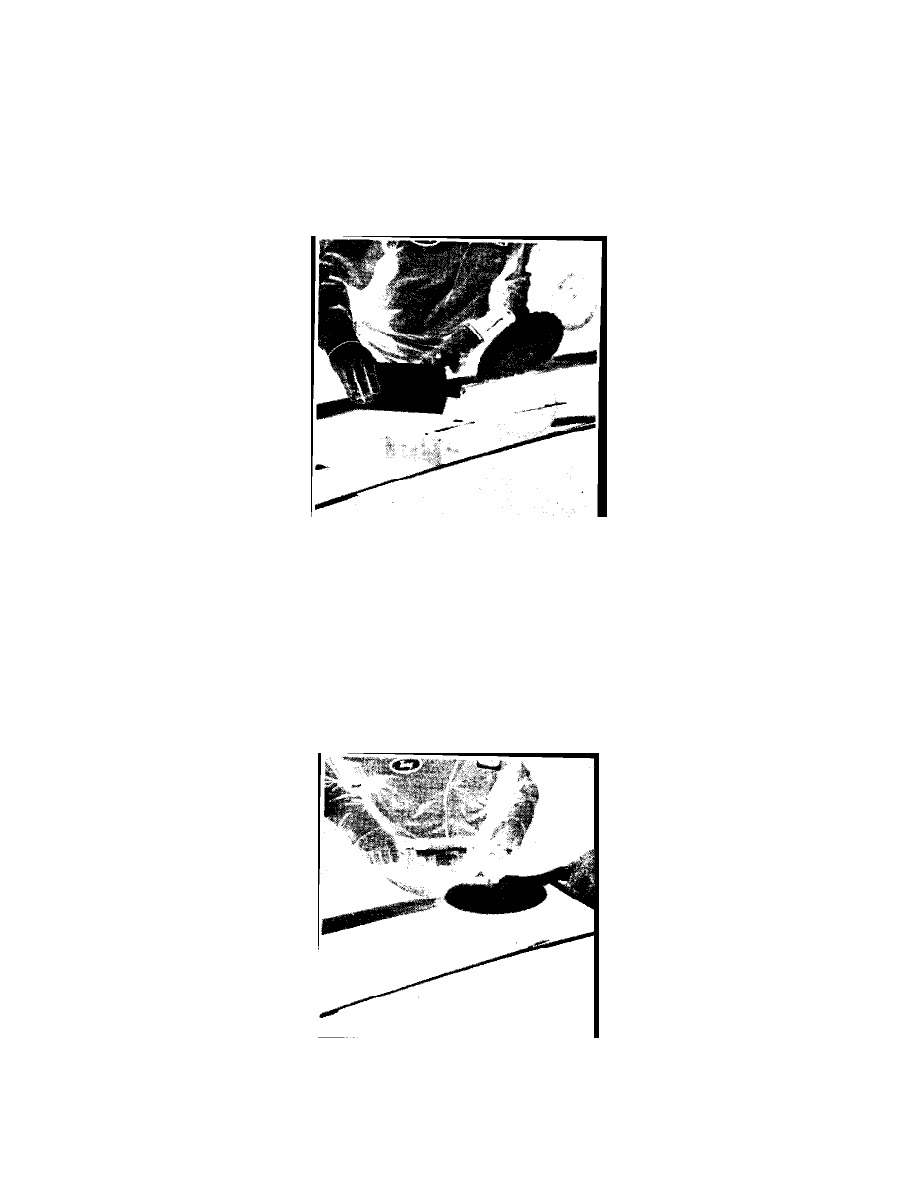Bronco L6-300 4.9L VIN Y 1-bbl (1983)

Service Procedure
The basic concept of the procedure is to remove the defect condition, and then restore the finish to an acceptable appearance. As a general guideline,
remember that sanding marks are removed with rubbing compound and the swirl marks evident after buffing are removed by polishing. As an example,
light scratches or small dirt particles can be removed with a power buffer and medium buffing compound followed by polishing. Deeper scratches, heavy
dirt particles or orange peel must be wet sanded, buffed with compound to remove
the sanding marks and then polished to remove the swirl marks from the buffing operation.
It is suggested with initial service attempts, that technicians develop a learning cycle by picking a small service area and first try polishing, then buffing
and finally wet sanding to remove the condition. When you have determined which method is appropriate, proceed with the remaining area to be
serviced and then restore the finish as required. The following outlines the complete procedure and required materials.
FIGURE 6
Polishing
For removal of very minor scratches, swirl marks and/or to restore luster to a dull finish.
Apply a small amount of 3M Final Glaze to the affected panel (Figure 6) and using a suitable electric or air powered polish/buffing wheel (2000 max.
rpm) and a 3M Superbuff 2 + 2 Pad, polish the affected area until all swirl marks are gone and desired luster is obtained. When polishing, keep the pad
flat against the surface. Do not bear down, the weight of the buffer is sufficient. Add Final Glaze sparingly as needed.
Compound
For removal of light scratches, small dirt particles, minor grind marks and sanding marks.
FIGURE 7
